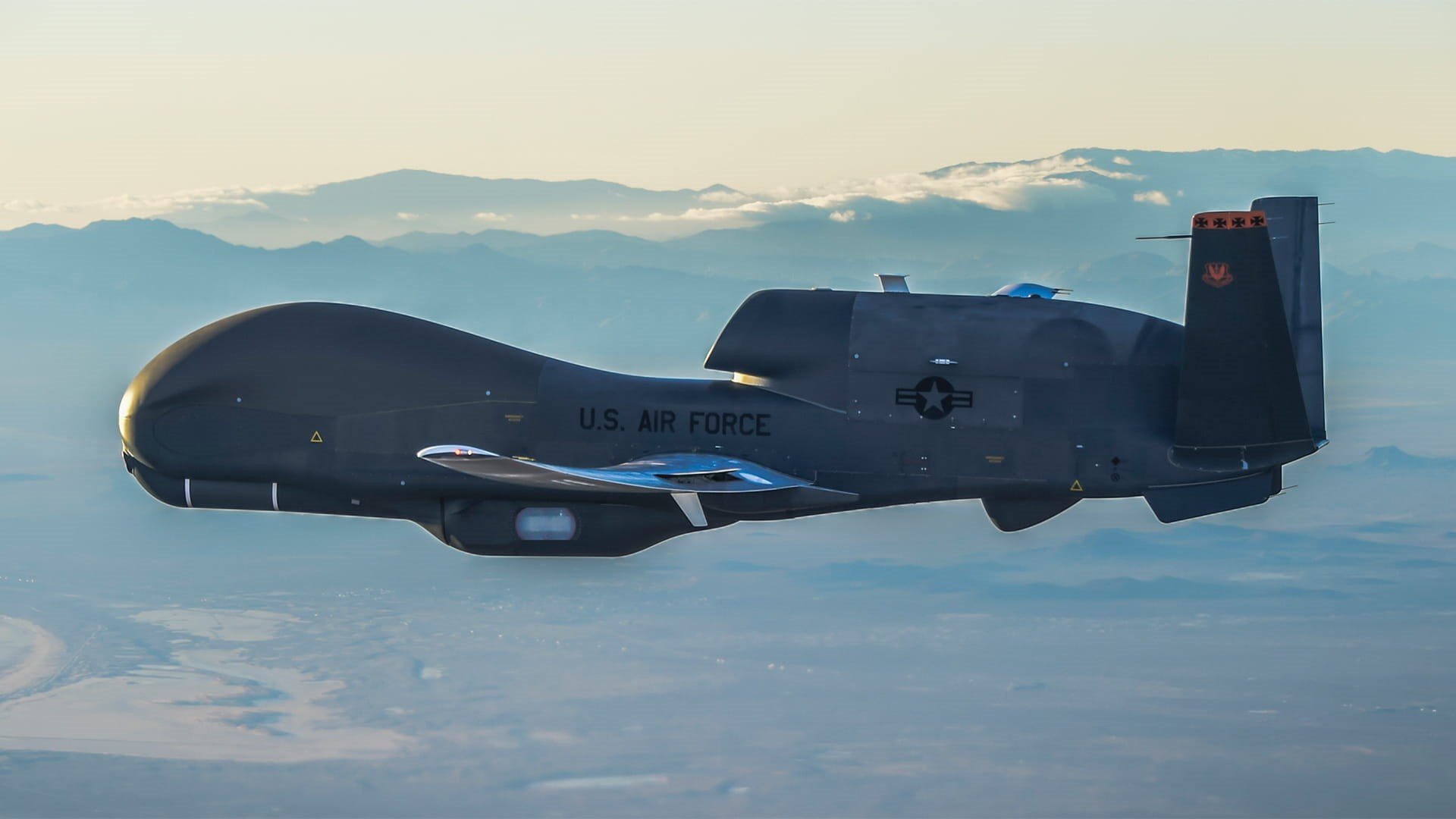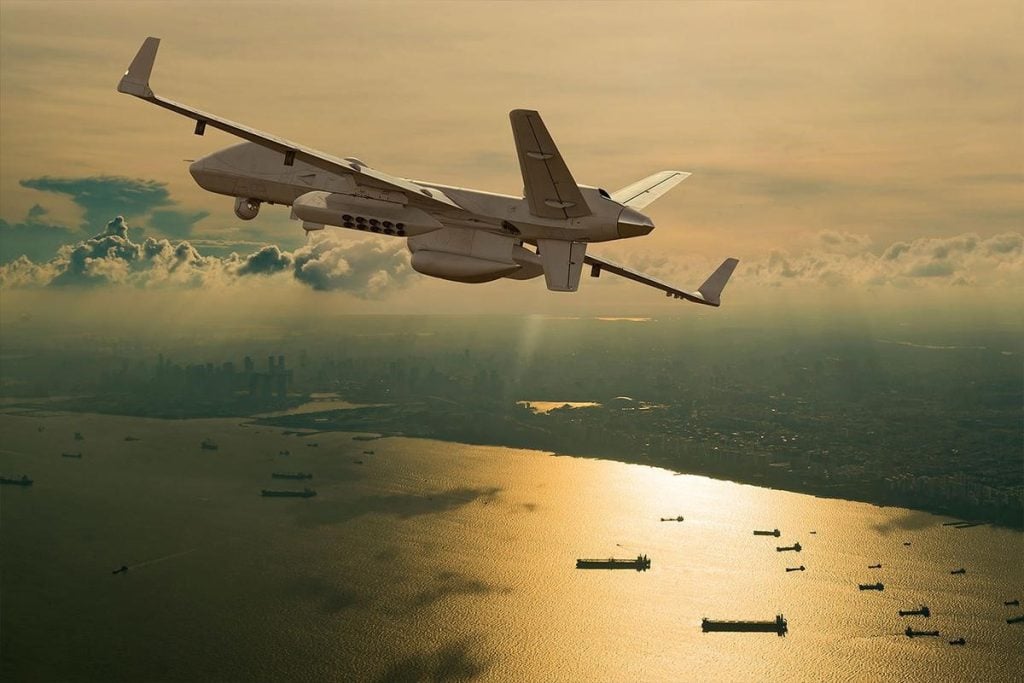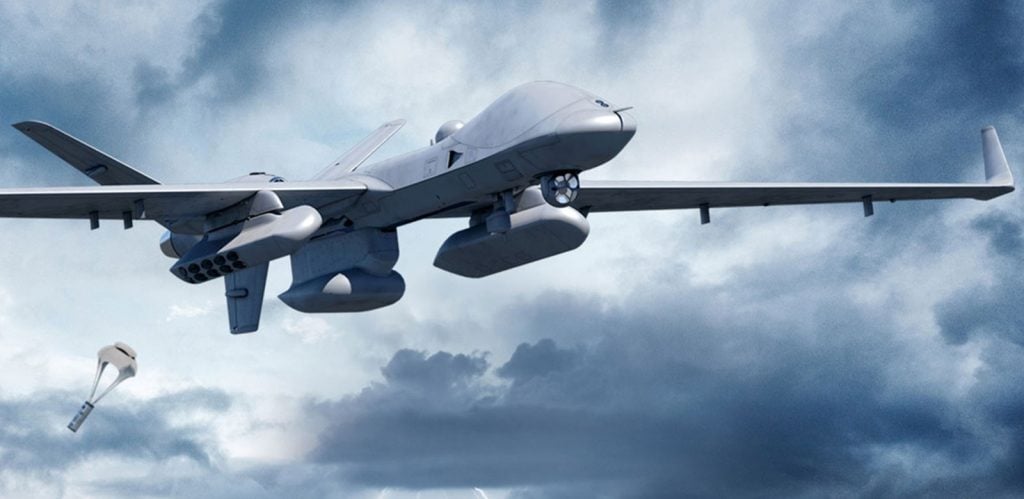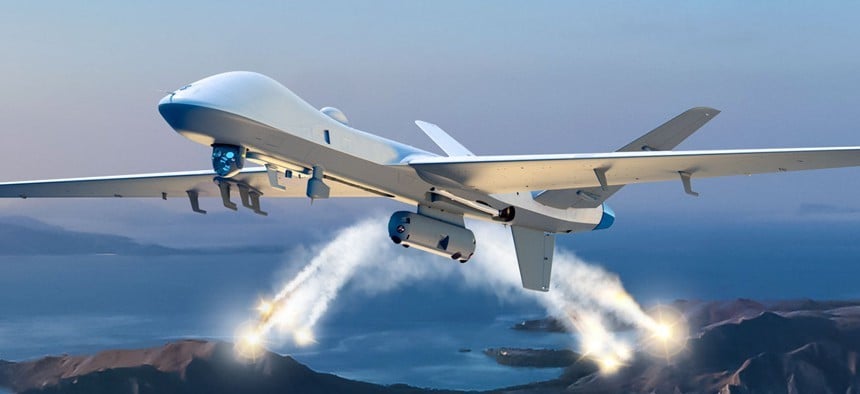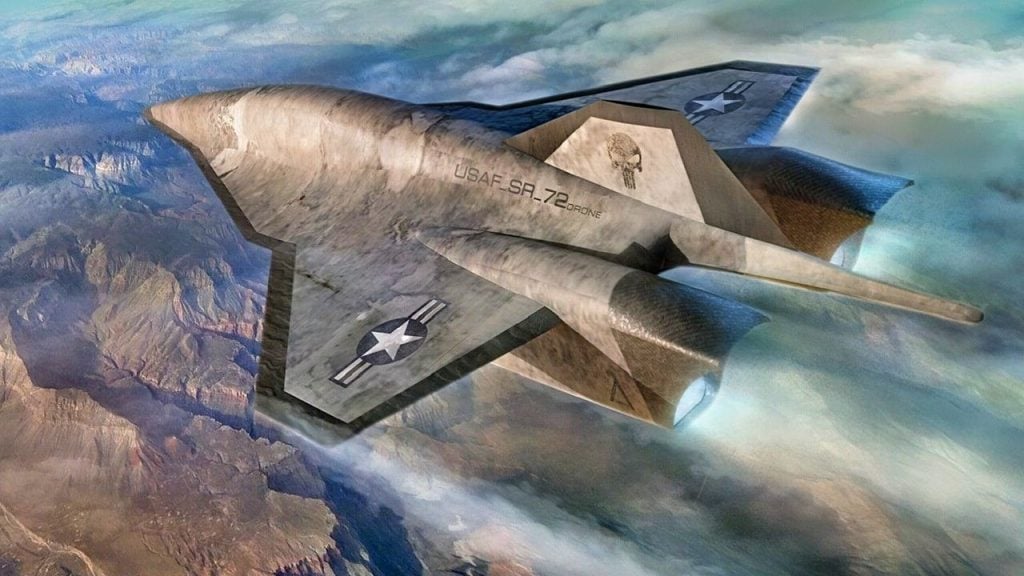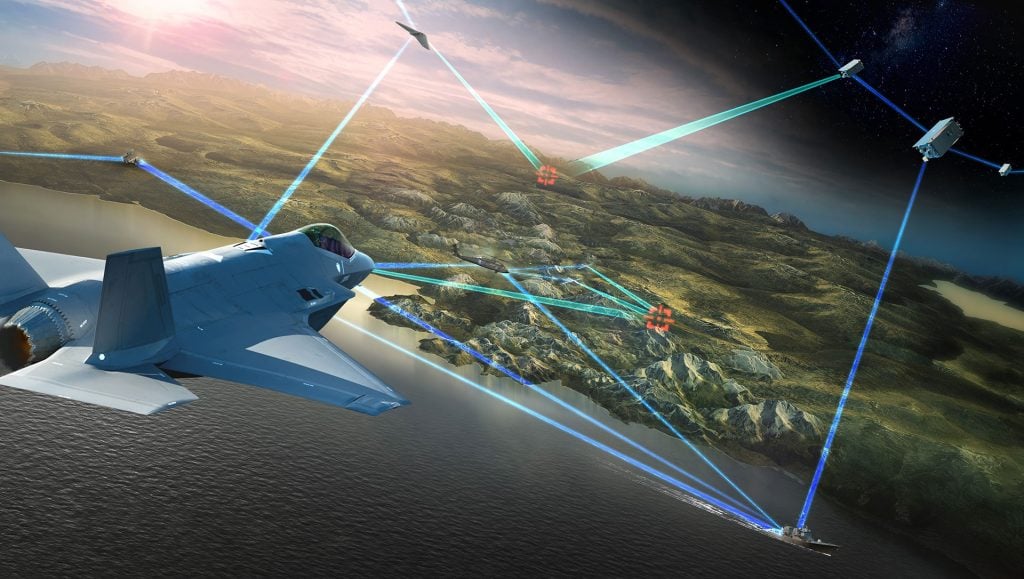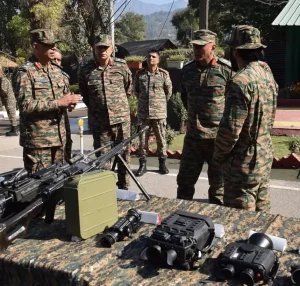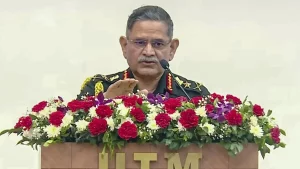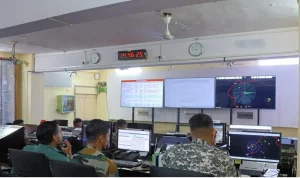Warfare has evolved significantly over the years, with technological advancements playing a crucial role in shaping modern military strategies. At the forefront of this transformation are Unmanned Aerial Vehicles (UAVs), also known as drones, which have become indispensable tools in the modern battlespace. These remotely piloted or autonomous aircraft are not only revolutionizing the way wars are fought but also redefining the very nature of military operations. This article delves into How UAVs Work in Air, Land, and Sea Operations.
The Rise of UAVs in Modern Warfare
The use of UAVs in warfare can be traced back to the early 1980s, when the Israeli Defense Force (IDF) successfully utilized real-time surveillance UAVs to neutralize Syrian surface-to-air missile batteries during the Lebanon conflict. Since then, the military’s reliance on these unmanned systems has only grown, with a wide range of applications, from reconnaissance and surveillance to precision strikes and logistics support.
The Advantages of UAVs
The primary advantages that have driven the widespread adoption of UAVs in modern warfare include:
- Minimizing Casualties and Loss of Life: UAVs can be deployed in high-risk situations without endangering human pilots, reducing the risk of friendly casualties.
- Cost-Effectiveness: Compared to manned aircraft, UAVs are generally more cost-effective to acquire, operate, and maintain.
- Real-Time Surveillance: UAVs can provide continuous, high-resolution intelligence, surveillance, and reconnaissance (ISR) data, enabling better-informed battlefield strategies.
- Extended Endurance: Many UAVs can stay airborne for extended periods, allowing for prolonged mission durations.
- Global Reach: Some UAVs, such as the Global Hawk, have the capability to operate over vast geographical areas, providing a global reach for military operations.
- Logistical Support: UAVs can be used to deliver goods and equipment, enhancing the logistical capabilities of military forces.
4 Top Private Air Forces Assisting US Military Training
Integrating UAVs into Multi-Domain Operations
The modern battlefield has become increasingly complex, with military operations spanning across multiple domains: air, land, sea, space, and cyberspace. To effectively navigate this complex landscape, the concept of Multi-Domain Integration (MDI) has emerged as a crucial strategy.
Understanding Multi-Domain Integration (MDI)
MDI involves the seamless integration of various military assets, including UAVs, to achieve a cohesive and coordinated response to potential threats. This approach was exemplified by Russia’s actions in the Syrian conflict, where they combined naval, land, air, space, and cyberspace assets to support the Assad regime.
The Role of UAVs in MDI
Within the framework of MDI, UAVs play a vital role in gathering and disseminating real-time intelligence, coordinating joint operations, and enhancing situational awareness across all domains. By integrating UAVs with other military assets, such as manned aircraft, ground forces, and naval vessels, commanders can gain a comprehensive understanding of the battlespace and make informed decisions in a timely manner.
Emerging Technologies Enhancing UAV Integration
As the military’s reliance on UAVs continues to grow, advancements in various technologies are further enhancing their capabilities and integration into multi-domain operations.
Artificial Intelligence (AI) and Automation
The integration of AI and automation into UAV systems is transforming the way these unmanned platforms operate. AI-powered algorithms can autonomously process and analyze vast amounts of data, enabling UAVs to make split-second decisions, identify targets, and coordinate with other assets in the battlespace.
Quantum Sensing
Quantum Sensing is a cutting-edge technology that can significantly improve the way military forces measure, detect, and interact with their environment. By leveraging quantum-based sensors, UAVs can enhance their ability to gather intelligence, communicate securely, and navigate in contested environments.
Human-Machine Interaction
The integration of human-machine interfaces, such as helmet-mounted displays, is enabling pilots to communicate directly with UAV computer systems, enhancing situational awareness and decision-making during missions.
The Future of UAVs in Multi-Domain Operations
As military technology continues to evolve, the role of UAVs in future warfare is expected to become even more prominent. Experts predict that future conflicts will be heavily unmanned, with UAVs and other autonomous vehicles playing a central role in intelligence gathering, target acquisition, and precision strikes.
The Lockheed Martin SR-72 “Darkstar”
One such example of the future of military UAVs is the Lockheed Martin SR-72, a hypersonic unmanned aircraft expected to enter service in 2023. This high-speed, stealthy platform will be capable of conducting intelligence, surveillance, and reconnaissance missions at unprecedented speeds, further enhancing the military’s ability to respond to emerging threats.
The Royal Australian Air Force’s MQ-4C Triton
Another notable example is the Royal Australian Air Force’s acquisition of the MQ-4C Triton, a maritime surveillance drone that will complement its fleet of P-8 Poseidon aircraft. This long-endurance UAV will provide the Australian military with enhanced capabilities to monitor and secure its vast maritime domain.
How Delta Force Masters the Art of Hostage Rescue
Challenges and Considerations
While the integration of UAVs into multi-domain operations offers numerous advantages, it also presents several challenges that military planners must address.
Cybersecurity and Vulnerabilities
The reliance on networked systems and data links in UAV operations introduces potential vulnerabilities to cyber threats. Ensuring the security and resilience of these systems is crucial to prevent adversaries from disrupting or exploiting them.
Ethical Considerations
The use of autonomous or semi-autonomous weapons systems, including armed UAVs, raises ethical concerns regarding the decision-making process and the potential for unintended consequences. Addressing these concerns will be a critical aspect of future UAV deployments.
Regulatory and Legal Frameworks
As the use of UAVs expands, both domestically and internationally, the development of comprehensive regulatory and legal frameworks will be necessary to govern their employment and ensure compliance with international laws and norms.
What Makes Today’s Armored Vehicles So Powerful?
Conclusion
The integration of Unmanned Aerial Vehicles (UAVs) into multi-domain operations has fundamentally transformed the way modern warfare is conducted. By seamlessly combining these unmanned systems with other military assets, such as manned aircraft, ground forces, and naval vessels, military commanders can gain a comprehensive understanding of the battlespace and make informed decisions in real-time.
As technology continues to evolve, the role of UAVs in future conflicts is expected to become even more prominent, with advancements in areas like artificial intelligence, quantum sensing, and human-machine interaction further enhancing their capabilities. However, the integration of UAVs into multi-domain operations also presents challenges, including cybersecurity vulnerabilities, ethical considerations, and the need for robust regulatory frameworks.
By addressing these challenges and continuing to innovate, military forces around the world can leverage the power of UAVs to achieve decisive strategic advantages, minimize casualties, and ensure the successful execution of their missions in the complex and ever-evolving modern battlespace.
FAQs
1. What is multi UAV system?
With the rapid advancement of Unmanned Aerial Vehicle (UAV) technology, an emerging area of focus is the use of multiple UAVs working together autonomously in complex environments. Among the various challenges to achieving full autonomous control, cooperative task assignment plays a crucial role.
2. What are the UAVs and how do they operate?
An unmanned aerial vehicle (UAV) is a military aircraft that operates autonomously, via remote control, or both. It is equipped with sensors, target designators, offensive weapons, or electronic transmitters intended to disrupt or eliminate enemy targets.
3. What is the use of UAVs in military operations?
They serve purposes in strategic and operational reconnaissance as well as battlefield surveillance. Additionally, they can engage directly in combat by either designating targets for precision-guided munitions launched from manned systems or by directly deploying these munitions themselves.
4. How many different types of UAVs are there?
Here’s an overview of the four primary drone types, including their uses, advantages, and limitations: Multi-Rotor Drones, Fixed-Wing Drones, and Single-Rotor Drones.
5. What operating system does a UAV use?
The Autonomy Operating System (AOS) is an open-source flight software platform equipped with Artificial Intelligence, designed for intelligent UAVs.
